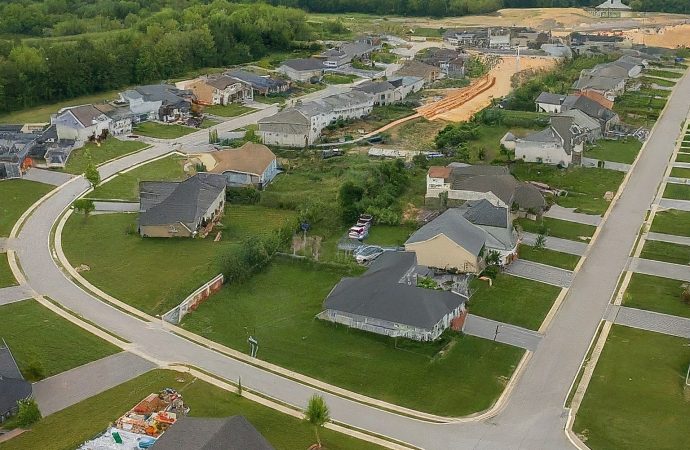Meet Sarah Jones, Your Guide to the Evolving Cityscape The past decade has witnessed a seismic shift in the way we work. Fueled by advancements in remote work technologies and a growing cultural acceptance of flexible work arrangements, millions of employees have traded in their daily commutes for the comfort of their home offices. This
Meet Sarah Jones, Your Guide to the Evolving Cityscape
The past decade has witnessed a seismic shift in the way we work. Fueled by advancements in remote work technologies and a growing cultural acceptance of flexible work arrangements, millions of employees have traded in their daily commutes for the comfort of their home offices. This phenomenon, aptly dubbed the “office exodus,” is reshaping the urban landscape at an unprecedented pace, presenting a unique set of challenges and opportunities for real estate investors, urban planners, and economists.
In this article, Sarah Jones, a seasoned urban planning consultant with over 15 years of experience, delves into the complexities of the office exodus and its far-reaching implications. Through insightful analysis and expert commentary, Sarah sheds light on the changing dynamics of cities and suburbs, empowering you to navigate this transformative period with a strategic edge.
Remote Revolution: The Driving Force Behind the Exodus
The office exodus can be directly attributed to the rise of remote work technologies. Cloud-based platforms, video conferencing tools, and collaborative software have made it easier than ever for employees to stay connected and productive outside the traditional office setting. A 2023 study by Upwork, a leading freelancing platform, revealed that nearly 40% of the American workforce now works remotely at least some of the time. This trend is expected to continue its upward trajectory, fueled by a younger generation who prioritize work-life balance and the flexibility to work from anywhere.
Urban Blues: The Challenges Facing Downtowns
The emptying of office buildings is posing a significant challenge to the financial well-being of many downtowns. Commercial property taxes are a major source of revenue for cities, and with vacancy rates on the rise, municipal budgets are feeling the strain. This decline in revenue can lead to cuts in essential services, reduced investment in infrastructure, and a general decline in the overall vibrancy of the city center.
Beyond the immediate financial impact, the exodus also raises concerns about the long-term sustainability of urban infrastructure. Public transportation systems, designed to handle large volumes of commuters, are experiencing significant drops in ridership. This decline in ridership can lead to service cuts, fare increases, and a vicious cycle of decline.

Picture by: Google Gemini
Suburban Sprawl 2.0: A Boon or Bust for Suburbs?
On the flip side of the coin, the suburbs are experiencing a surge in population as remote workers relocate from city centers. This influx of new residents presents both opportunities and challenges for suburban communities.
Increased demand for single-family homes is driving up property values in many suburbs, creating a potential boon for real estate investors. However, this growth can also strain local infrastructure, particularly schools and roads, which were not designed to accommodate a significant increase in population.
Reimagining City Centers: The Need for Strategic Adaptation
Cities are not destined to become ghost towns. The key to survival lies in adaptation. Forward-thinking urban planners are exploring innovative ways to repurpose vacant office buildings. This could involve converting them into residential units, co-working spaces, or mixed-use developments that incorporate retail, entertainment, and green spaces.
Investing in public transportation infrastructure that caters to a more dispersed workforce is also crucial. This might involve expanding bike lanes, improving bus service, or even exploring innovative solutions like autonomous shuttles.
Investment Opportunities: Capitalizing on the Shifting Market
For real estate investors, the office exodus presents a unique opportunity to capitalize on the changing market dynamics. While investment in downtown office buildings might seem risky, there are lucrative opportunities in other sectors.
Suburban single-family homes are a clear beneficiary of the exodus, and investors with a long-term perspective can find value in these markets. Additionally, the demand for co-working spaces and mixed-use developments in both cities and suburbs is expected to rise, presenting attractive investment options.
The Future of Work: A Collaborative Approach
The office exodus is not merely a real estate trend; it’s a fundamental shift in the way we work and live. To navigate this complex landscape effectively, a collaborative approach is essential. Real estate investors, urban planners, and economists must work together to create solutions that are sustainable and beneficial for all stakeholders.
This might involve the development of incentive programs to attract businesses and residents back to city centers, or the creation of public-private partnerships to fund infrastructure improvements in suburbs. By working together, we can ensure that the office exodus ushers in an era of vibrant and thriving communities, not urban decay or suburban sprawl.
Conclusion
The office exodus presents a challenging yet exciting opportunity to reshape our cities and suburbs for the future. By understanding the evolving dynamics, embracing innovation, and fostering collaboration, we can create communities that cater to the needs of a remote workforce while fostering a sense of connection and belonging. This transformation requires a paradigm shift, not just in urban planning, but also in how we view the very concept of work and the spaces where we do it. The future of our cities and suburbs hinges on our ability to adapt, collaborate, and build a future that works for everyone.
















